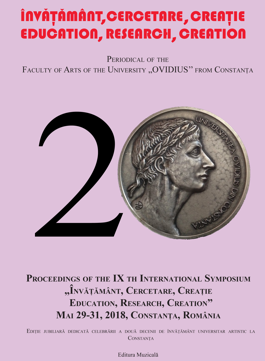Crows and Cormorants: Homer Odyssey 5 and 12, Aratus Phaenomena 949-953, and Cicero Prognostica IV. 8-9
Crows and Cormorants: Homer Odyssey 5 and 12, Aratus Phaenomena 949-953, and Cicero Prognostica IV. 8-9
Author(s): Barney McCullaghSubject(s): Language and Literature Studies
Published by: Editura Muzicală
Keywords: Crow; Cormorant; Cicero; Aratus; Homer; Odysseus; Nausicaa; Promontory; Sea; River; Waves; Sand; Shore; Mating; Talkative; Cawing; Chattering
Summary/Abstract: The word in Greek for both crow and cormorant is‘κορώνη’. This sets both Aratus, and Cicero a difficult challenge as they seek to explain how these birds’ behaviour constitutes signs of a change in the weather. How do these authors distinguish between the different meanings of ‘κορώνη’ which also include ‘garland’ ‘culmination of a festival’ even ‘bones in the jaw’? Faced with such diversity, the authors weave a form of literature that is at once chameleonic and kaleidoscopic in movement. We are eventually brought to the realisation that the subject of the poem is the meaning and behaviour of words as viewed through the behaviour of birds. The subject ceases to be the behaviour of birds as articulated by words. As one meaning of a word rises above the textual horizon another disappears only to reappear, like a celestial body setting and rising. This image of the way the text operates derives from the main subject of Aratus’ poem, namely the behaviour of the constellations. To set the work of Aratus and Cicero in context, we first discuss the treatment of cormorants by Homer in Odyssey Books 5 and 12.
Journal: Învăţământ, Cercetare, Creaţie
- Issue Year: IV/2018
- Issue No: 1
- Page Range: 79-106
- Page Count: 28
- Language: English

